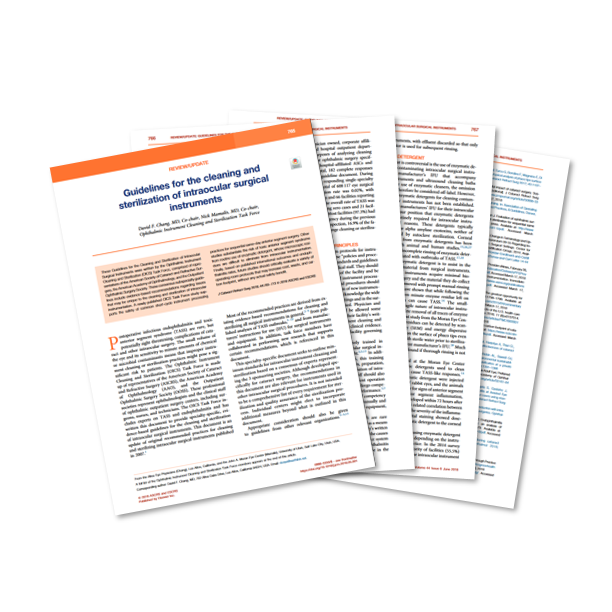On August 16, 2022, the Prescribing Information for VUITY (pilocarpine hydrochloride ophthalmic solution) 1.25% was updated following a voluntary submission by Allergan, an AbbVie company, to the U.S. Food and Drug Administration (FDA). New information has now been included in the Warnings and Precautions, Postmarketing Experience, and Patient Counseling Information sections. This ASCRS Task Force was convened to develop an understanding of the data and a preliminary consensus on appropriate counseling of patients regarding risks associated with the use of VUITY.
More Information >>
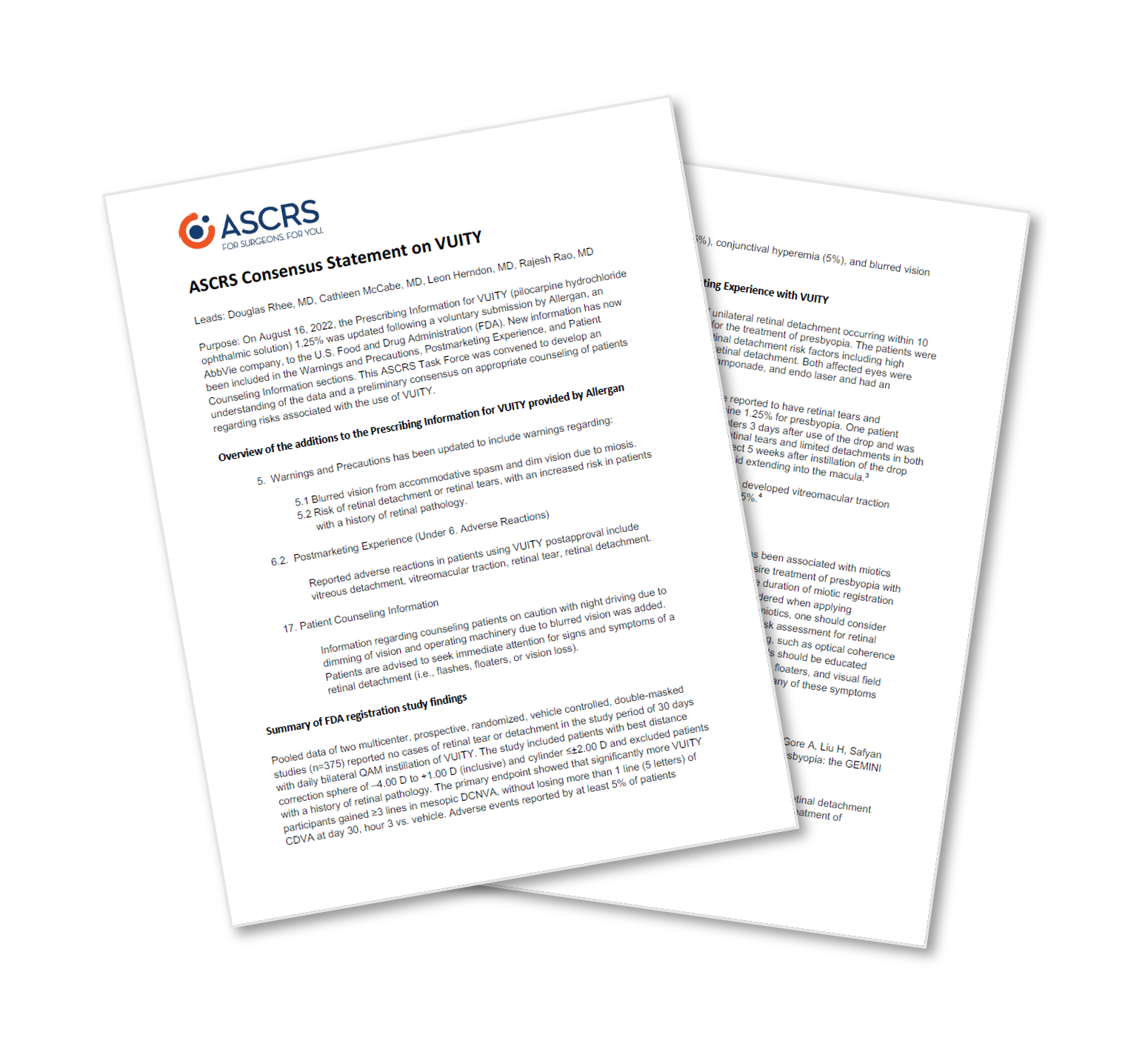
Moxifloxacin solution is frequently injected at the conclusion of cataract surgery for endophthalmitis prophylaxis. Two different concentrations are commonly available in the United States (U.S.) for intracameral (IC) use: 0.5% [5 mg/mL] and 0.1% [1 mg/mL]. The recommended volume to be injected is different for the two concentrations, and incorrect dosing can increase the risk of toxic anterior segment syndrome (TASS) or endophthalmitis.
More Information >>

Refractive prediction errors remain a cause of patient dissatisfaction after cataract surgery. Successful management of residual refractive errors requires preoperative prevention but also an understanding of its management postoperatively.
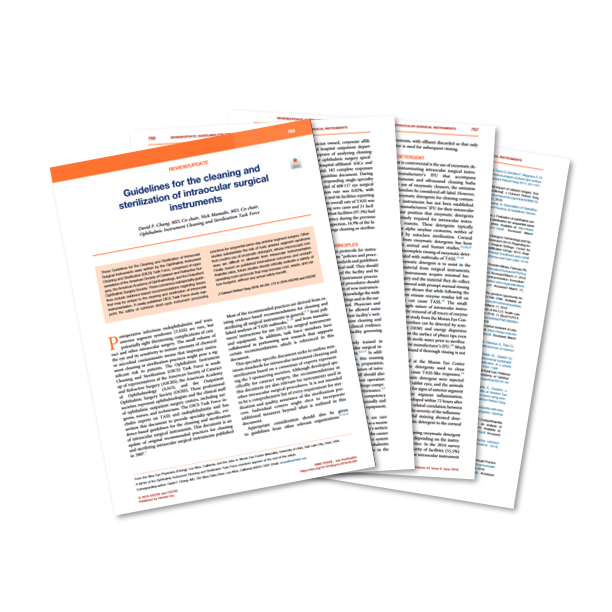
A review of the current literature on the corneal crosslinking (CXL) procedure for treating ectasia. Cornea Clinical Committee members explored the data on the techniques currently in use and under investigation, including their advantages, safety profiles, risks, and cost analyses, compared with data on corneal transplantation.

The ASCRS Cornea Clinical Committee developed a new consensus-based practical diag-nostic OSD algorithm to aid surgeons in efficiently diagnosingand treating visually significant OSD before any form of refractivesurgery is performed. By treating OSD preoperatively, postoper-ative visual outcomes and patient satisfaction can be signifi-cantly improved.

Posterior polar cataracts present a unique challenge for the cataract surgeon. Proper preoperative examination and diagnostics and specific techniques for each stage of the procedure are described, all with the aim of protecting the posterior capsule and preserving intraocular lens (IOL) fixation options.

As cataract surgery continues to evolve, the intraoperative small pupil continues to pose challenges to even the most experienced cataract surgeon. Several steps can be taken preoperatively to decrease the chance of intraoperative miosis. Even so, the problem of miosis during cataract surgery remains a relatively common occurrence.

We describe the essential steps in the successful phacoemulsification of the rock-hard, dense cataract. Appropriate and directed preoperative history, physical examination, and diagnostics allow the surgeon to select the best incision, anesthesia, and intended surgical technique for a given dense nuclear challenge.

These Guidelines for the Cleaning and Sterilization of Intraocular Surgical Instruments were written by the Ophthalmic Instrument Cleaning and Sterilization (OICS) Task Force, comprised of representatives of the American Society of Cataract and Refractive Surgery, the American Academy of Ophthalmology, and the Outpatient Ophthalmic Surgery Society.

As cataract surgery has evolved into lens-based refractive surgery, expectations for refractive outcomes continue to increase. During the past decade, advancements in technology have provided new ways to measure the cornea in preparation for cataract surgery.

A recent alteration in the formulation of epinephrine from one of the more common sources of preservative‐free epinephrine has contributed to a shortage or impending shortage of this product for ophthalmologists.
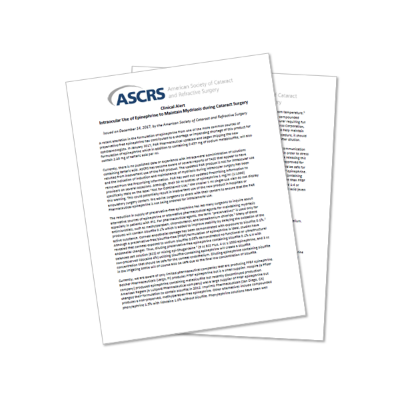
The removal and rate of recurrence of pterygium have been discussed for years. The disorder is highly associated with environmental factors, and recurrence rates can be unacceptably high and cannot be successfully predicted.

Unregulated cosmetic iris implants being inserted outside the United States and European Union are causing severe ocular complications in many patients.
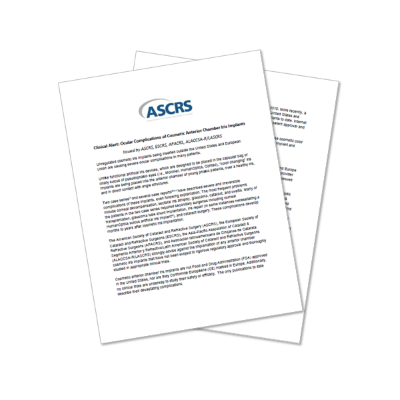
Nonsteroidal antiinflammatory drugs (NSAIDs) have become an important adjunctive tool for surgeons performing routine and complicated cataract surgery. These medications have been found to reduce pain, prevent intraoperative miosis, modulate postoperative inflammation, and reduce the incidence of cystoid macular edema (CME).

2016 Survey of ASCRS members helps to define how ophthalmologists are using antibiotics prophylactically for cataract surgical patients.
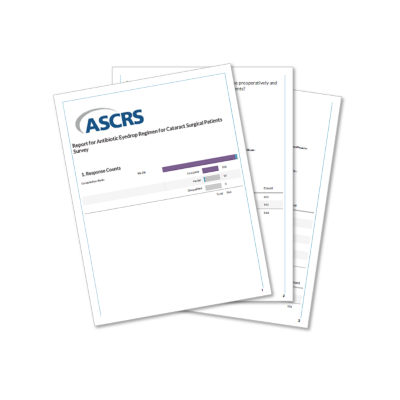
Following the first published series of hemorrhagic occlusive retinal vasculitis (HORV) the American Society of Cataract and Refractive Surgery and the American Society of Retina Specialists formed a joint task force to further analyze the prevalence, potential etiology, treatment, and outcomes of this complication associated with intraocular surgery.
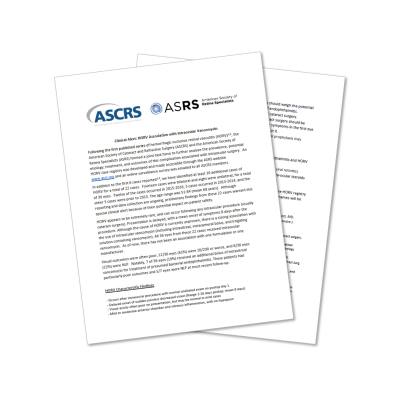
ASCRS has released an official position statement opposing directives that restrict the use of diluted povidone-iodine solution for topical infection prophylaxis and the use of multidose topical eye drops on multiple patients.
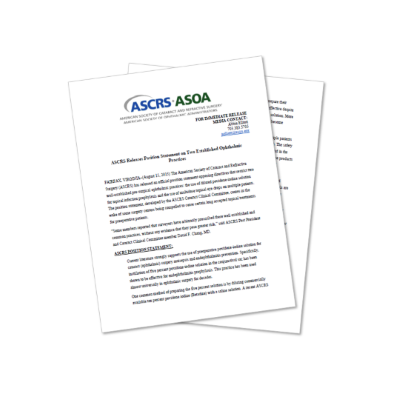
One of the more challenging surgeries for the anterior segment surgeon is cataract extraction and intraocular lens (IOL) implantation in the small eye. This begs the question of what constitutes a “small eye.”

A 2014 online survey of the American Society of Cataract and Refractive Surgery members indicated increasing use of intracameral antibiotic injection prophylaxis compared with a comparable survey from 2007.




